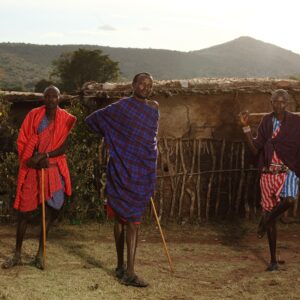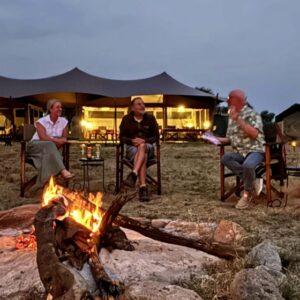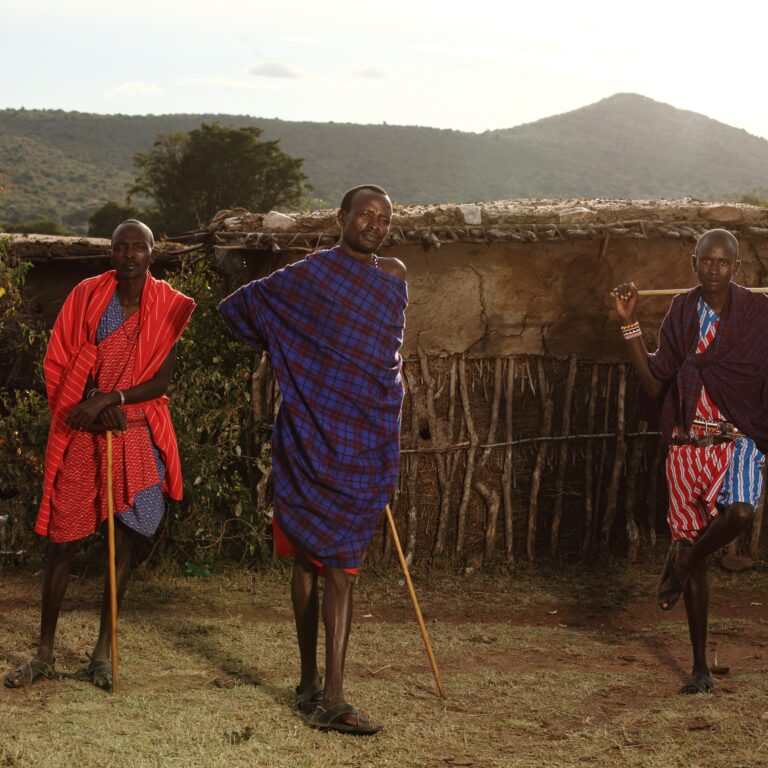Imagine the vast, golden plains of the Serengeti stretching to the horizon, a lion’s roar echoing in the distance, or the vibrant hues of a sunset painting the sky as you drive through a baobab-studded landscape. A safari in Tanzania is a sensory feast, an immersive journey into the heart of the wild. To truly savor every moment, your comfort and preparedness are paramount, and that starts with what you wear during your Tanzania Safari Packages. Packing for an African safari is more than just choosing outfits; it’s about making strategic decisions that enhance your experience, protect you from the elements, and ensure you blend seamlessly (both visually and culturally) into your surroundings. Forget the fashion show; on safari, practicality, comfort, and appropriate attire are your best companions.
The Golden Rules of What to Wear on a Tanzania safari Attire
Before we dive into specifics, let’s establish the foundational principles that guide smart safari packing: The golden rules for choosing safari attire in Tanzania involve prioritizing neutral, earthy colors like khaki, beige, and olive to blend with the environment, and opting for long sleeves and pants for sun and insect protection. Comfortable, closed-toe shoes are also essential, along with a wide-brimmed hat and sunglasses. Avoid bright colors and dark blues or blacks, as these can attract insects like tsetse flies.
Layers are Your Lifeline. East African weather, particularly on safari, is a chameleon. Early mornings on game drives are often surprisingly cold, especially in open vehicles. By midday, the equatorial sun can be intense. As evening approaches, temperatures drop again. Dressing in layers allows you to adapt effortlessly throughout the day, adding or shedding garments as needed.
Embrace Neutral Colors. This is perhaps the most crucial rule. Opt for shades that blend with the natural environment: khaki, olive green, tan, beige, brown, and grey. These colors minimize your visibility to wildlife (especially important if you’re on a walking safari) and are less likely to attract insects like tsetse flies, which are drawn to dark blue and black. Avoid bright, flamboyant colors (which can startle animals) and stark white (which gets dirty instantly and stands out). Military-style camouflage patterns are also generally discouraged or even restricted in some areas.
Prioritize Comfort and Functionality. You’ll spend many hours sitting in a safari vehicle, often on dusty, bumpy roads. Choose loose-fitting, breathable fabrics like cotton, linen, or moisture-wicking synthetics. They’ll keep you cool and dry.
Protection from the Elements. The African sun is powerful. Dust is omnipresent. Insects, particularly mosquitoes (especially at dawn and dusk), are a reality. Your clothing should offer defense against all three.
Soft-Sided Luggage Only. If your itinerary includes light aircraft transfers between parks (which is very common for reaching remote camps), strict luggage weight and size restrictions apply. Hard-sided suitcases are often not permitted. Pack in a soft-sided duffel bag that can be easily stowed in small cargo compartments (typically 15-20 kg/33-44 lbs per person, including carry-on).
Detailed Clothing: What to Wear on a Tanzania safari Breakdown
Now, let’s break down the essential garments for your safari wardrobe: For a Tanzania safari, pack light, breathable clothing in neutral colors like khaki, olive, or tan to blend with the environment and deter insects. Long-sleeved shirts and pants are recommended for sun and insect protection, while a warm fleece or jacket is useful for cooler mornings and evenings. Don’t forget a wide-brimmed hat, sunglasses, and comfortable walking shoes or hiking boots for walking safaris.
Safari Shirts (3-5 short-sleeved, 2-3 long-sleeved):
Short-sleeved: Ideal for warmer daytime wear. Look for quick-drying materials.
Long-sleeved: These are your secret weapon. They provide excellent sun protection for your arms, act as a barrier against mosquito and insect bites, and offer warmth during cooler mornings and evenings. Choose styles with roll-up tabs so you can adjust sleeve length. Button-down tops offer good ventilation.
Safari Trousers/Pants (2-3 pairs)
Opt for lightweight, durable, and quick-drying fabrics. Convertible zip-off pants are incredibly practical, allowing you to switch between long pants and shorts as temperatures change. Long pants also protect your legs from sun, thorny bushes, and insect bites.
Avoid heavy denim jeans; they are slow to dry, can be uncomfortable in the heat, and bulky to pack.
Shorts (1-2 pairs): For relaxing at camp during the day, after a game drive, or if you prefer them for very warm afternoon drives (though long pants offer better protection).
Warm Layers (1-2)
Fleece Jacket or Warm Sweater: Essential for the chilly early morning game drives and evenings around the campfire. The temperatures can drop significantly as soon as the sun rises or sets.
Lightweight Puffy Jacket: A packable down or synthetic insulated jacket provides excellent warmth for its weight and compresses easily. It can be layered over your fleece for maximum warmth.
Outerwear (1)
Lightweight Waterproof/Windproof Jacket. Even during the dry season, unexpected showers can occur, and this layer provides excellent protection against wind on open safari vehicles, especially at higher speeds.
Nightwear/Loungewear (1-2 sets). Comfortable and modest clothing for evenings at the lodge or camp.
Swimwear (1-2 sets). Many safari lodges and camps have refreshing swimming pools, perfect for a dip after a dusty game drive. Essential if you’re combining your safari with a beach extension in Zanzibar.
Footwear: Supportive and Practical
Most of your time on safari will be spent in a vehicle, so extensive hiking boots aren’t usually necessary unless you specifically plan for strenuous walking safaris or treks (like Kilimanjaro).
Comfortable Closed-Toe Shoes (1 pair). Sneakers, walking shoes, or light hiking boots with good grip are ideal. Ensure they are well broken-in before your trip to prevent blisters. These protect your feet from dust, small stones, and potential insect bites when walking around camp.
Sandals/Flip-Flops (1 pair). Perfect for relaxing at camp, by the pool, in your room, or on the beach in Zanzibar.
Socks (3-5 pairs). Opt for moisture-wicking socks for game drives to keep your feet comfortable and dry. Cotton socks are fine for evenings.
Headwear & Eye Protection
Wide-brimmed Hat. Crucial for shielding your face, neck, and ears from the intense equatorial sun during game drives. Look for one with a chin strap so it doesn’t fly off in the wind.
Sunglasses. Essential for glare reduction and protecting your eyes from dust and UV rays.
Prescription Glasses (if applicable). If you wear contact lenses, bring a pair of glasses as well. Dust and dry air can make contact lenses uncomfortable on safari.
Accessories & Personal Items
Bandana or Scarf. Incredibly versatile! Use it to cover your face from dust on bumpy roads, protect your neck from the sun, or even wet it for a cooling effect in the heat.
Insect Repellent (with DEET). A non-negotiable item. Apply it at dawn and dusk, especially on exposed skin, to deter mosquitoes and tsetse flies.
Sunscreen (high SPF) & Lip Balm with SPF. Reapply frequently, even on cloudy days.
Small Daypack/Backpack. For carrying your essentials during game drives – camera, water bottle, extra layer, hat, sunscreen, binoculars.
Camera Gear Protection. Bring dust covers (like large Ziploc bags or specialized dry bags) for your camera and lenses, along with a blower brush and microfiber cloths. The dust on safari roads is legendary!
Cultural Considerations on what to wear in Tanzania Safari
While safari attire is generally relaxed, remember that Tanzania is a culturally conservative country, particularly outside of tourist enclaves. When visiting local towns, villages, or Stone Town in Zanzibar, it’s respectful to dress modestly:
For Women. Cover your shoulders and knees. Loose-fitting long skirts, capri pants, or trousers and T-shirts or tops that cover the shoulders are appropriate.
For Men. Long shorts or trousers are generally acceptable.
Beachwear is perfectly fine within beach resorts and on the beach itself.
What colors not to wear on safari in Tanzania? On a Tanzania safari, it’s best to avoid wearing bright colors, white, and dark colors like blue and black. Neutral colors such as khaki, light brown, beige, olive, and green are recommended.
What do you wear on a safari in Tanzania? What should I wear and take on Safaris in Tanzania? Consider comfortable and lightweight clothing that is suitable for safari vehicles and other game-viewing activities. Prefer neutral beige and khaki colors instead of bright color clothes. Pack a light warm jacket or lightweight cotton clothes for cooler weather.
Should I wear shorts on safari? Wearing shorts may be seen as disrespectful or inappropriate, especially when visiting local villages or communities. Therefore, it is generally recommended to wear lightweight long pants or trousers on safari in Tanzania, especially during game drives and bush walks.
What to wear in Tanzania as a woman? In Tanzania, women should prioritize modest clothing that covers the shoulders and knees, especially when in public spaces or visiting religious sites. Lightweight, breathable fabrics are recommended due to the hot and humid climate. Neutral colors like khaki, beige, and olive are practical for safaris and outdoor activities. For beach areas, swimwear is appropriate, but it’s best to cover up when moving to other areas.
Safari clothing for women vs Safari clothing for Men. Experience the Safari clothing for women typically features tailored cuts, lightweight fabrics, and feminine touches like belted waists and fitted silhouettes. Common items include cargo pants, breathable shirts, and utility jackets in neutral tones. Men’s safari clothing emphasizes functionality with looser fits, rugged fabrics, and multiple pockets for gear. Key pieces include khaki shorts, button-up shirts, and durable vests. While both prioritize comfort and protection in hot climates, women’s safari wear often blends style with practicality, whereas men’s focuses more on utility and ruggedness.
- What to Wear on an African Safari: A Comprehensive Guide
- What Do You Wear On A Serengeti Safari?
- Tips: What should I wear for Summit Night on Kilimanjaro?
- Best Tanzania Road Trip Itinerary for 10 Days That Starts and Ends in Arusha
- What to Pack for a Great Migration Safari
Conclusion: Your Adventure Awaits
What you wear on a Tanzania safari is about more than just aesthetics; it’s about embracing the adventure with confidence and comfort. By packing thoughtfully – prioritizing layers, neutral colors, practical footwear, and protection from the elements – you’ll be well-equipped to fully immerse yourself in the magic of the African bush. So, pack smart, shed your everyday worries, and prepare to be captivated by the wild heart of Tanzania.








